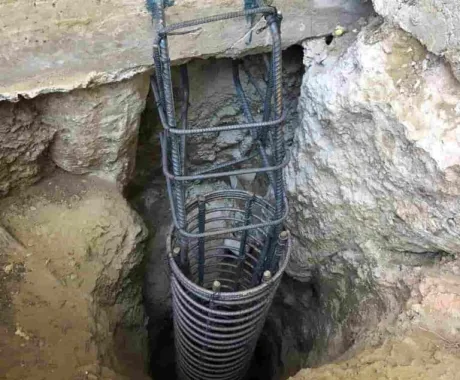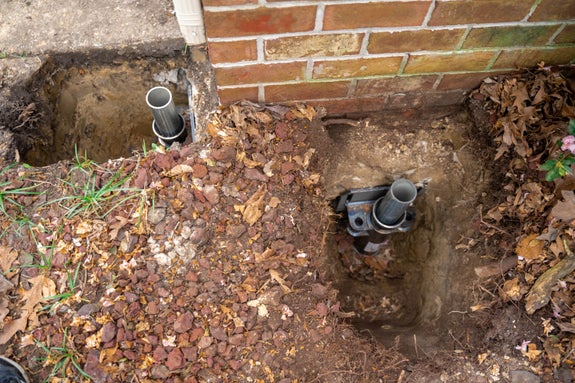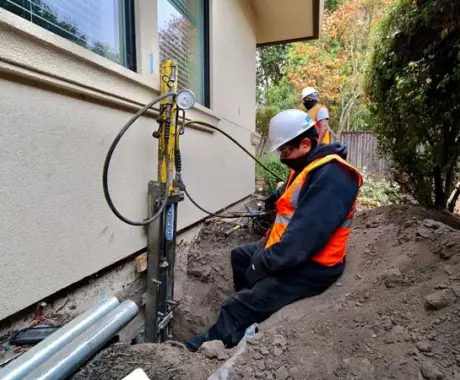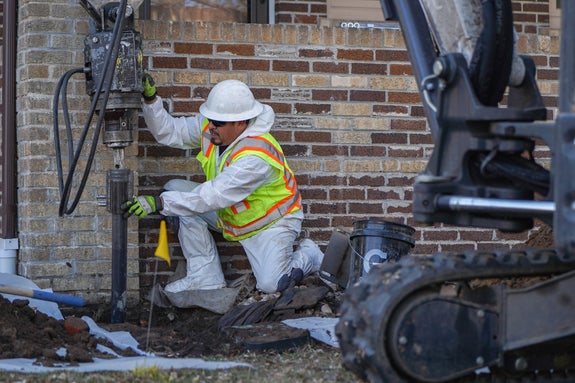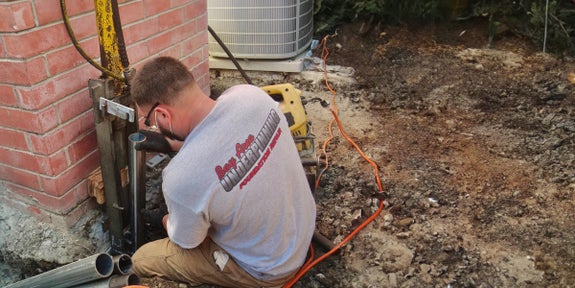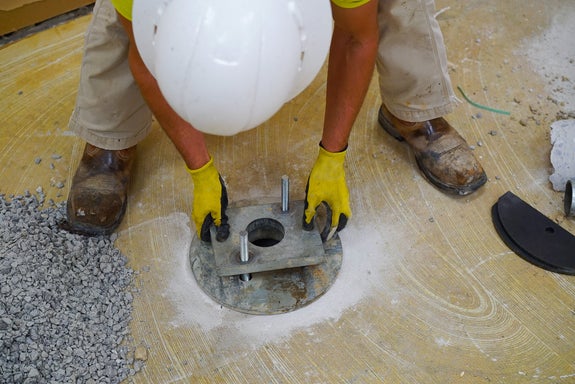Superior Pier & Beam Foundation Repair
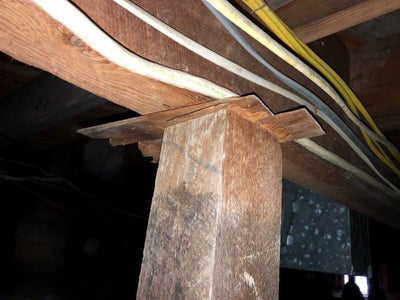
In Northern California, Bay Area Underpinning stands out for its expertise in addressing pier & beam foundation issues. Recognized for our skilled team and effective solutions, we tackle the unique challenges of pier & beam foundations in the region’s homes.
Selecting Bay Area Underpinning means entrusting your home to a team with unmatched knowledge and extensive experience.
What is a Pier & Beam Foundation?
A pier and beam foundation, also known as a post and beam or crawl space foundation, is elevated above ground level, creating a “crawl space” underneath the house. Here’s how it functions:
- Piers: Deeply embedded vertical supports, typically concrete or brick, that anchor into the ground for stability and help prevent the house from shifting or settling.
- Beams: Horizontal supports resting on the piers, spreading the house’s weight evenly across them.
- Crawl Space: This substantial gap between the ground and the house’s base allows easy access to utilities and acts as a barrier against ground moisture, lessening damage risks.
Advantages of pier and beam foundations include:
- Adaptability: They’re great for areas with shifting soils as they can be adjusted relatively easily compared to slab foundations.
- Utility Access: Simplifies maintenance or changes to utilities without extensive digging.
- Moisture Prevention: The elevated design helps protect against flooding and reduces the chances of mold and rot.
Regular inspections are essential to check for wood rot, pests in the crawl space, and pier alignment.If you’re unsure about your home’s foundation type or its condition, contact Bay Area Underpinning for a free inspection.
Our Approach to Pier & Beam Foundation Repair
Bay Area Underpinning’s approach combines advanced methods, deep expertise, and a commitment to homeowners. We begin each project with a detailed inspection to identify specific issues with your pier & beam foundation. Based on this, we tailor a repair strategy to ensure your home’s stability.
Our solutions for pier and beam foundation repair include:
- Support Jacks: At Bay Area Underpinning, we use crawl space support jacks for robust foundation support. Our team measures the space under your home to accurately place these jacks, offering long-lasting stability.
- Sonotubes: Acting as hollow concrete columns, sonotubes are strategically placed around the foundation. Our process involves removing the broken or old pier and beam footing and replacing it with a strong concrete form. This technique not only revitalizes the foundation but also boosts its support capability.
- Shoring: This method adds extra support to worn foundations by attaching new beams, joists, and piers.
We guarantee precision in every service, ensuring reliable results for homeowners.
Contact us for a complimentary home evaluation.
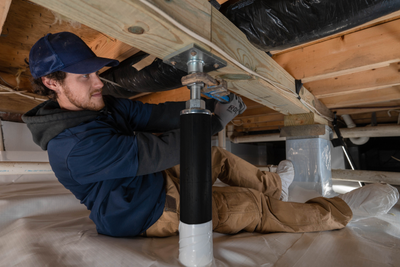
What makes Bay Area Underpinning’s pier and beam foundation repair exceptional?
- Our Sonotubes can support about 3,000 pounds per square foot, significantly more than typical foundations.
- Shoring is minimally invasive, preserving your home’s interior and yard.
- Our adjustable support jacks adapt to changes in your home’s condition over time.
Signs Your Home Needs Pier & Beam Foundation Repair
Prompt recognition of these issues can prevent severe problems, including:
- Sagging floors
- Gaps between walls and floors
- Doors that stick or won’t close
- Uneven or slanted beams
- Wood decay signs
- Moisture in the crawl space
Early intervention is key. Turn to Bay Area Underpinning for expert advice and solutions.
Why Choose Bay Area Underpinning for Your Residential Pier & Beam Foundation Repair?
Choosing Bay Area Underpinning brings homeowners numerous advantages:
- Efficient Planning: We minimize disruption, ensuring a quiet and peaceful repair process.
- Expertise: Our extensive experience ensures effective pier & beam foundation repair.
- Cost-Effectiveness: Our methods address root causes, offering lasting solutions and savings.
- Top-Grade Tools: We use cutting-edge technology for durable results.
- Long-Term Security: Our repairs provide lasting stability for your foundation.
Bay Area Underpinning is your partner in maintaining your home’s safety and stability.As Northern California’s leading foundation repair specialist, Bay Area Underpinning delivers the commitment and quality your home deserves. Contact us for a free, no-obligation evaluation!
Contact Bay Area Underpinning for Your Pier & Beam Foundation Needs!



Don’t let minor foundation issues become major problems. Protect your home’s safety and comfort.
Call Bay Area Underpinning to schedule your free inspection. We’re dedicated to providing effective, homeowner-focused pier & beam foundation repair services.
FAQs
Pier and beam foundations, or post and beam foundations, offer advantages like easy access to utilities, improved flood protection, and better handling of ground movements, resulting in a more comfortable living environment.
Bay Area Underpinning tackles wood rot through a detailed inspection and replacement of deteriorated wood with high-quality timber. We also apply fungicides and protective solutions, and may recommend crawl space encapsulation with dehumidifiers and vapor barriers to control moisture and prevent rot.
The duration of pier and beam foundation repair varies based on damage severity and repair methods. Minor repairs might take a few days, while extensive repairs could take weeks. Projects involving additional piers or complete foundation replacement may take longer.
Publish Date:
Last Modified Date:
Explore more solutions

Our Locations
2333 Courage Dr. Suite C
Fairfield, CA 94533
1161 N Fair Oaks Ave
Sunnyvale, CA 94089

